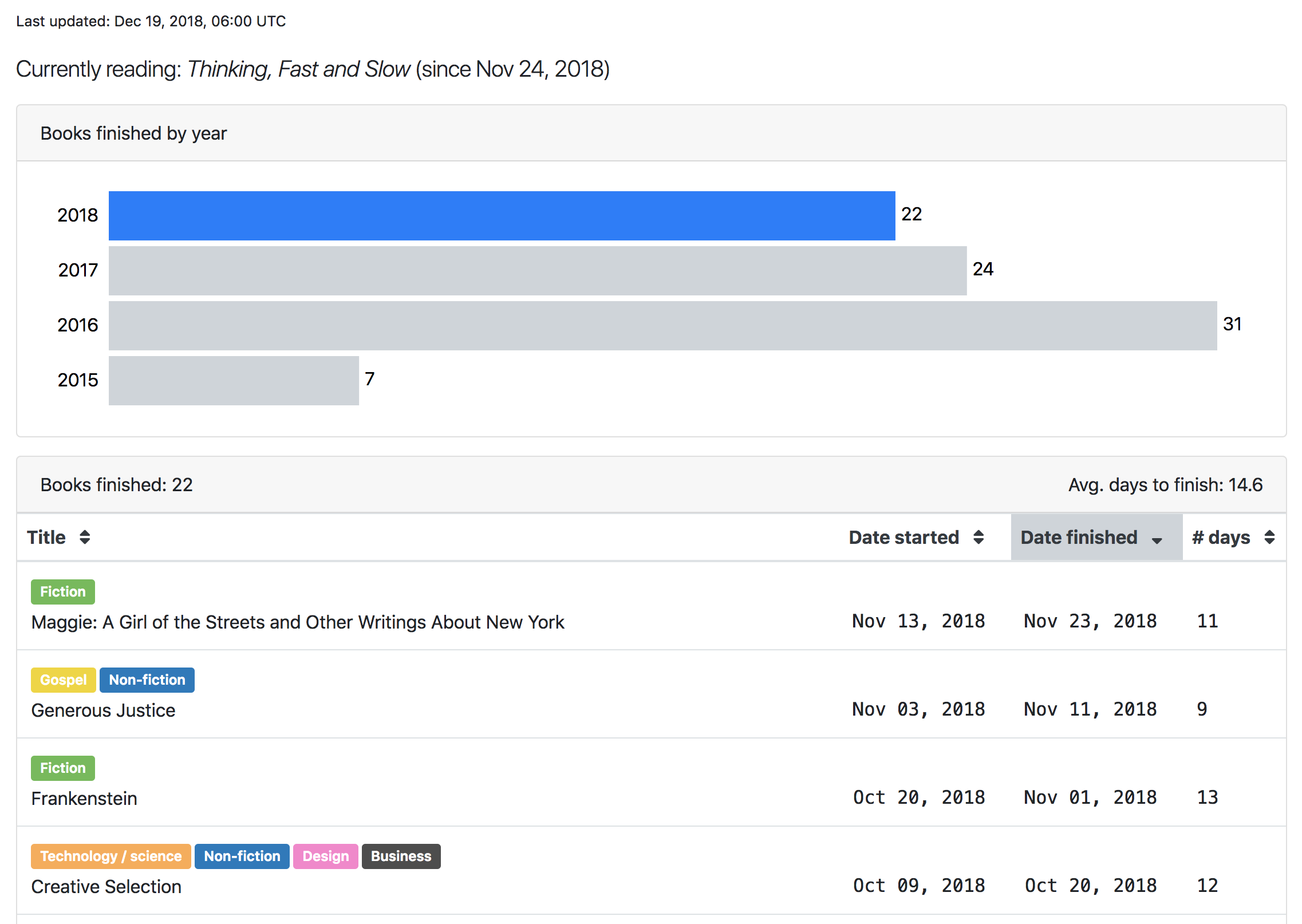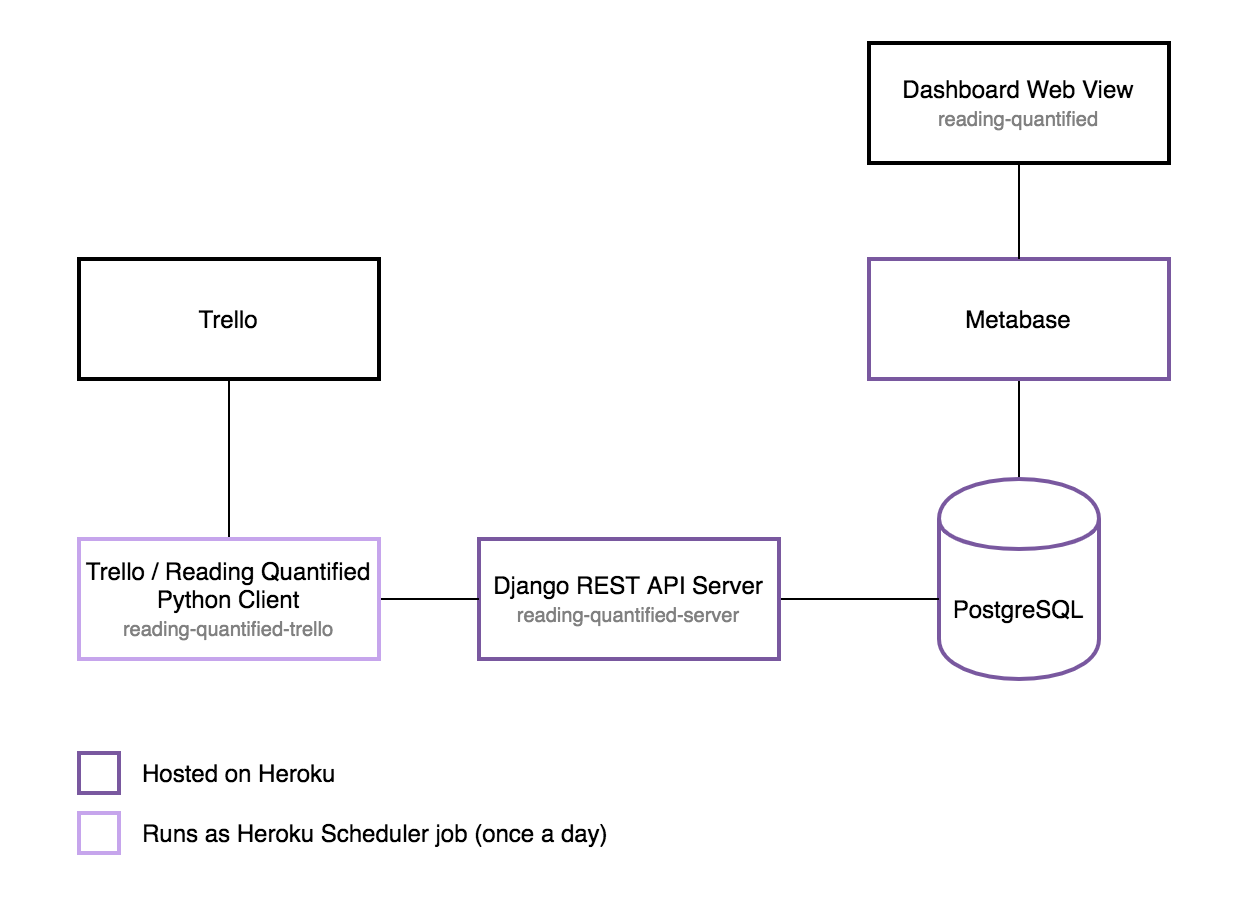Refactoring Reading Quantified
19 December 2018
Introducing Reading Quantified v3.0
Goodbye, custom UI. Hello, Metabase!

And here’s a snapshot of what it looks like now:

The 3rd iteration of Reading Quantified is a complete overhaul, from the backend to the frontend. The backend used to be powered by Node.js & Parse; it has been replaced with Django. A new Python client has also been created that retrieves cards from Trello & stores them in the Django server.
The repos are all available on GitHub:
- reading-quantified: A dashboard for analyzing my reading habits, powered by Metabase
- reading-quantified-server: A Django REST API server
- reading-quantified-trello: Retrieves cards from Trello & stores them in the Django server
And here’s how the different components work together:

Why the change?
When I first started Reading Quantified in 2015, I chose Parse to power the backend & Angular and d3 for the frontend. Many things have changed since then. Parse was bought & shutdown by Facebook, and then went open source. Angular is now on v7.1.4, while I haven’t upgraded from v1.4.8. I knew a change was in order.
I also was very interested in trying out Metabase. I’ve tinkered with it in the past, but I wanted to use it in more depth. I thought this project was very well suited as my experimenting platform.
I also wanted to move away from Node.js & NoSQL. The aysynchronous nature of Node.js is great, but the nested callback nightmares can be unwieldy. I decided to go “old school,” and use Django & relational database (PostgreSQL) to serve & store the data.
What about the custom UI?
I may revisit this in the future. One workflow I had in mind is to use Metabase for exploratory analyses. Once I’ve settled on metrics I’d like to keep an eye for awhile, then I can recreate a more polished version. It’s something I’m going back and forth on.
Conclusion
Looking back, it’s amazing to me how the project has evolved since I started it 3 years ago. From the technology choices I made, to the crappy code I initially wrote, to where it is now. Pretty cool. Looking forward to evolving this even more in the future.
Categories: Books, Python, Web
comments powered by Disqus